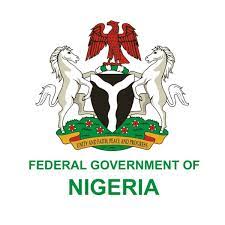In reaction to the Central Bank of Nigeria’s (CBN) recent hike in the Monetary Policy Rate (MPR), the financial services sector in Nigeria has swiftly adjusted its lending rates. The MPR, which serves as a benchmark interest rate, was raised by 750 basis points to 26.25% in May 2024 from 18.75% in July 2023, prompting banks to recalibrate their lending strategies.
Data released by the CBN reveals that out of 31 lending institutions surveyed, 25 are offering maximum borrowing interest rates that exceed the new MPR across various sectors of the economy. Conversely, six lenders are providing loans to select sectors at rates below the benchmark interest rate.
Here’s a snapshot of the lending rates published by some deposit money banks (DMBs) as of May 17, 2024:
Access Bank is offering a maximum lending rate of 28.50% for customers in agriculture, forestry, and manufacturing, with a lower borrowing rate of 22% for prime customers.
Citi Bank provides a maximum interest rate of 28% for similar sectors and a prime rate of 21.50%.
Coronation Merchant Bank offers loans at a 30% rate for both prime and maximum categories, with a 9% interest rate for prime customers in mining, quarrying, and manufacturing.
Ecobank sets its maximum lending rate at 30%, with a 26.75% prime lending rate.
FBN Quest Merchant Bank extends a 9% rate to prime customers in agriculture and forestry, 7% to those in manufacturing, and a maximum lending rate of 30% in the manufacturing sector.
FCMB prices its loans at a maximum of 40% and offers a prime lending rate of 22.50%.
Fidelity Bank provides loans at a 27% interest rate for its prime customers, with a maximum rate of 30%.
First Bank of Nigeria offers a lending rate of 25% to its prime customers, with a maximum rate of 32%. However, prime customers in manufacturing can access loans at a lower rate of 15%.
FSDH Merchant Bank allows prime customers to borrow at 18%, with a maximum lending rate of 43%. Prime customers in manufacturing secure loans at 9%.
Guaranty Trust Bank offers a maximum lending rate of 24% for agriculture and manufacturing sectors, with lower prime rates of 10% and 22%, respectively, for these sectors.
Keystone Bank provides lending rates of 31% for prime customers and 36% as the maximum rate across all sectors.
Optimus Bank offers prime and maximum lending rates of 23.75% and 35%, respectively, to customers across various sectors.
Polaris Bank offers a 9% rate to prime customers in specific sectors, with maximum rates of 35% and 32% for agriculture and manufacturing sectors, respectively.
Premium Trust Bank offers maximum lending rates between 32% and 33% for certain sectors, with a prime rate of 28%.
Providus Bank provides a maximum lending rate of 30% and a prime rate of 25% across all sectors.
Rand Merchant Bank offers a maximum lending rate of 32.5% and prime rates ranging from 22% to 24.75%.
Signature Bank provides lending rates of 32% for prime customers and 35% for maximum lending rates.
Stanbic IBTC Bank sets the highest lending rate at 50% maximum, with prime lending rates ranging from 8% to 27%.
Standard Chartered Bank offers prime and maximum rates of 19% and 26%, respectively, across all sectors.
Sterling Bank provides lending rates of 29% for prime customers and 37% for maximum customers across any sector.
SunTrust Bank offers prime lending rates ranging from 7% to 18%, with maximum rates from 20% to 29%.
TitanTrust Bank provides prime lending rates between 25% and 28.50% and maximum rates between 25% and 36%.
United Bank for Africa (UBA) offers borrowing rates of 28.50% for prime customers and a maximum rate of 32% across all sectors.
Union Bank offers prime and maximum lending rates at 19.65% and 35%, respectively.
Unity Bank offers lending rates from 9% to 30%, with a maximum rate of 38%.
Wema Bank sets rates at 32.50% for prime lending and 34.50% for maximum lending rates.
Zenith Bank provides prime lending rates of 25.28% and maximum rates of 30% across various sectors.
These adjustments reflect the banks’ efforts to maintain profitability and manage risk amid the tightening monetary policy environment imposed by the CBN. As economic conditions evolve, these rates may continue to fluctuate in response to regulatory changes and market dynamics, impacting borrowing costs across Nigeria’s economic landscape.










